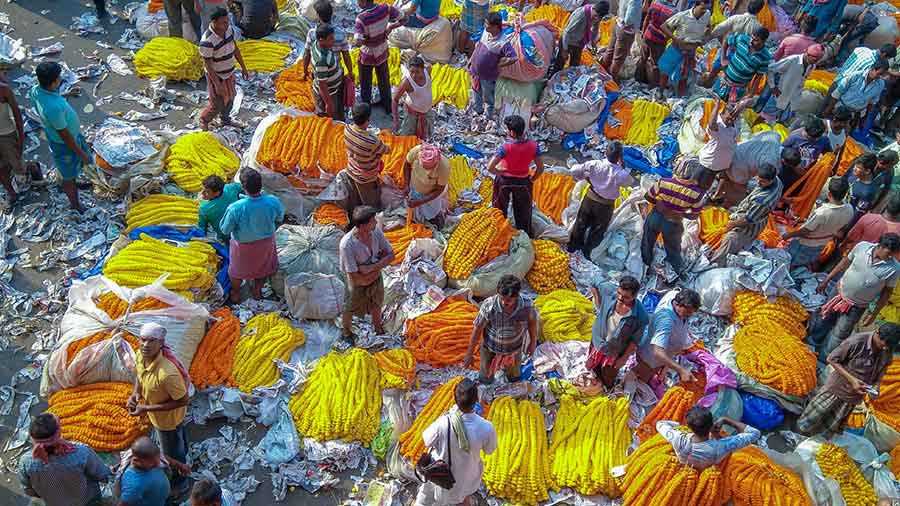Hardly any ritual, function, puja, birthday, funeral or wedding in Kolkata is complete without flowers from Mullick Ghat — the vibrant and bustling flower market on the banks of the Hooghly.
The market wakes with the first rays of the sun. Not just flowers, but the many other sorts of decorations with flowers are sold here. The business here comprises not only of the countless farmers and middlemen who sell their products, but also the many shop-keepers who offer decoration services and more. The chaos is governed by an undiscernible order, which remains invisible but palpable. And that is how the things have been getting done here, not only presently, but for well over a century.
History of the ghat
The ghat that we identify today as just Mullick Ghat used to be known as Nimai Mullick Ghat. It was built by Rammohan Mullick in 1855, in memory of his father Nimai Charan Mullick. History reveals that the ghat was constructed on the grounds of the old ‘Noyaner Ghat’, which had been constructed by one of the family’s predecessors, Noyanchand Mullick, in 1793. Another illustrious individual from the family, Jadunath Mullick, renovated Mullick Ghat between the years 1870-74. Incidentally, this was also when a pontoon bridge was being built across the river to the south of the present ghat. Today’s Jagannath Ghat, built by Shobharam Basak in 1760, stands right next to the Mullick Ghat.
These two ghats played a very important role in the past as they were the places from where steam ships used to ferry pilgrims to Puri, Odisha.
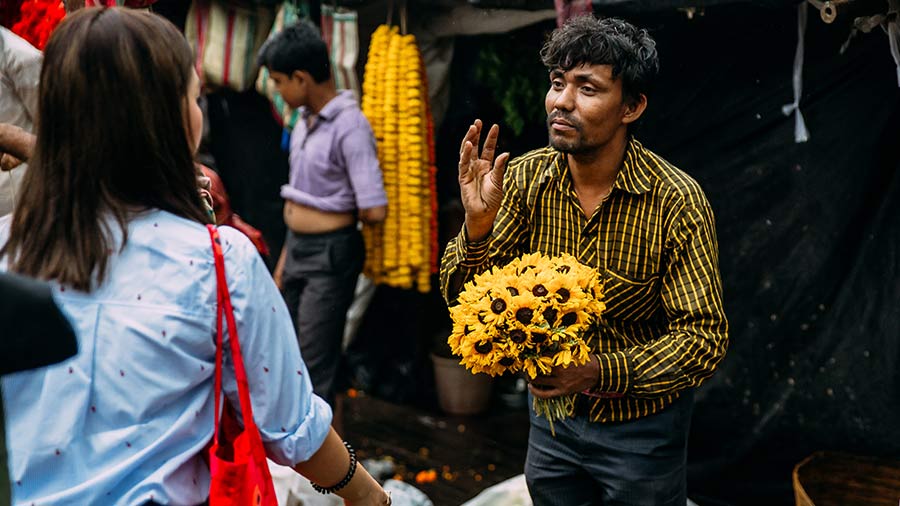
A customer bargains with a seller Shutterstock
Other claims to fame
Mullick Ghat was also the site where the first of Kolkata’s pumping stations was commissioned and it was also where a dynamo was set up in 1879 to illuminate the pontoon bridge connecting Kolkata and Howrah. Historical references suggest that Mullick Ghat’s façade had a pavilion of classical European style, with a dome to match. It is believed that from 1940 onwards, the ghat wore a far less ornate look, and was without much of the colonial sheen of its heyday.
How it all started
It’s not very clear how the flower trade came to be established at Mullick Ghat, but it may be safe to surmise that the religious factor — that of pilgrims heading to Puri, had a big role to play in its growth. Today, it is one of the most vibrant, active and crowded sections of the Hooghly along Kolkata.
Always bustling
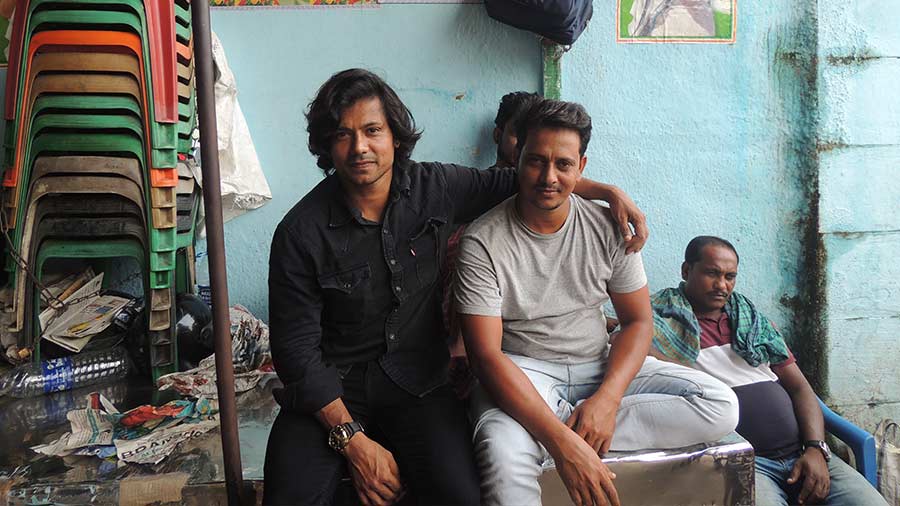
‘People from 10 districts come here regularly and buyers with all kinds of budgets are catered to,’ said Raju Mukherjee (left), a member of the seller’s association of the market
Even on light days, the flower market looks like a sea of humans, albeit in a surf of colourful flowers. It’s a far cry from being ‘spick and span’, but that is hardly of consequence to those who make their livelihoods here. The flower sellers descend on the market at the crack of dawn, having left their far-off villages well before first light.
Raju Mukherjee, a member of the seller’s association of the market, said, “This is a part of Kolkata that attracts innumerable people every day. On some special days, and especially during festival times, this number swells even more. There are days every year when all one can see from the Howrah Bridge would be an ocean of people. In my opinion, there should not be any major upheaval of the market, as life continues undisturbed in spite of the huge footfall. People from 10 districts come here regularly and buyers with all kinds of budgets are catered to. This precarious balance must not be disturbed as then the entire functioning of [one of] Asia’s largest flower market may be affected.”
How the market operates
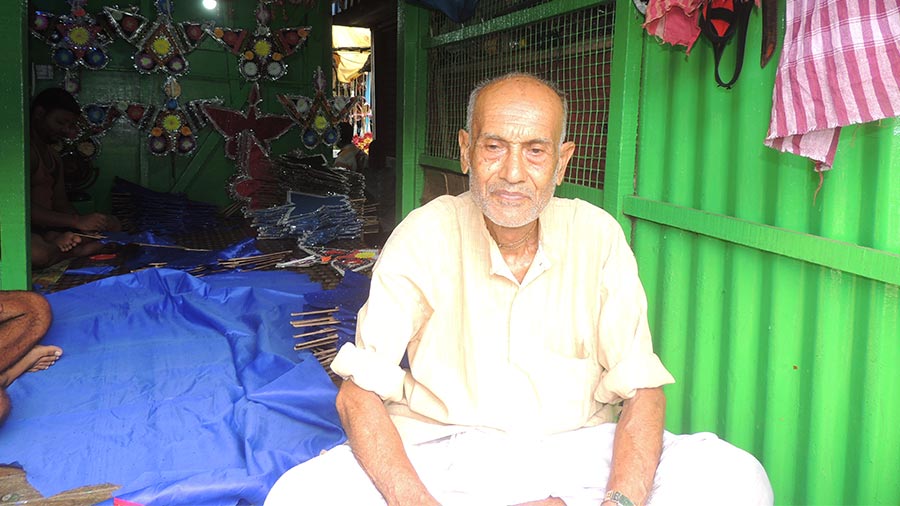
Madhab Chandra Das sits at his shop at the market, which he has run for over 50 years
Madhab Chandra Das, a shop-owner, also shared his thoughts with My Kolkata. He said, “I have been a part of this market for over 50 years. I have been in the business of flower decorations and am intrinsically linked to the trade here. There are fixed shop owners like myself, there are the ‘phoriyas’ or brokers, and the flower growers and cultivators who come here from neighbouring as well as far-off villages. ‘Phoriyas’ are in the trade of collecting the flowers from the growers and then transporting and selling them here. There are also those who take the train to transport their fare to the market. Buyers and sellers come from all parts of the city and its neighbouring areas, but the majority are small flower establishments in the city. The market comes alive from 4am and is generally open till 9-9.30pm.”
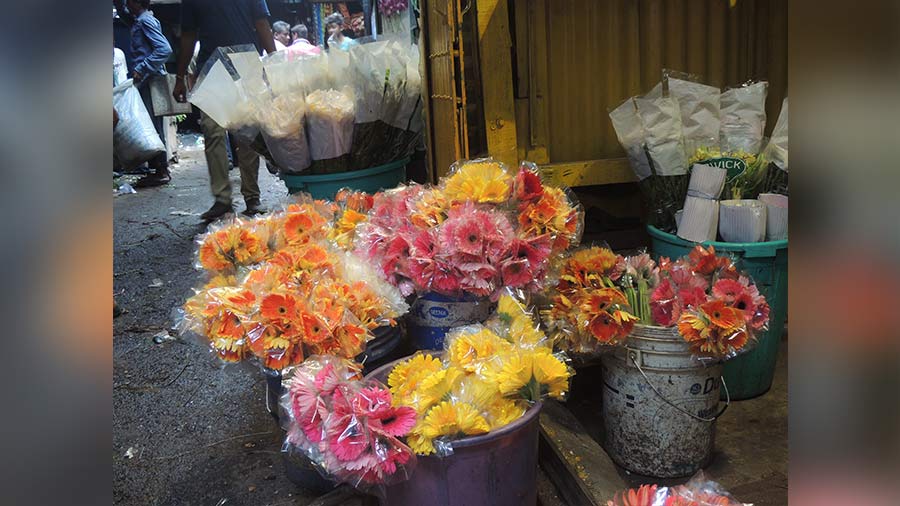
Not just the regular flowers, but attractive gerberas too never fail to attract attention
Dwindling trade
Reflecting on the modern scenario, Das added, “Sadly, as with other businesses elsewhere, our trade too has dwindled quite a bit. I remember when I started here, we were used to profit margins that were double, or even more, of our expenses. But now, as a result of severe competition, our days of happiness and assurances are gone, and we have been compelled to make do with negligible profits. What saves the day for many of the traders are the endless varieties of requirements for different rituals and festivals that happen throughout the year and that mercifully fetches some extra returns. Though we manage as best we can without complaining, it would be nice if the government can arrange at least filtered water for us.”
Pandemic blow
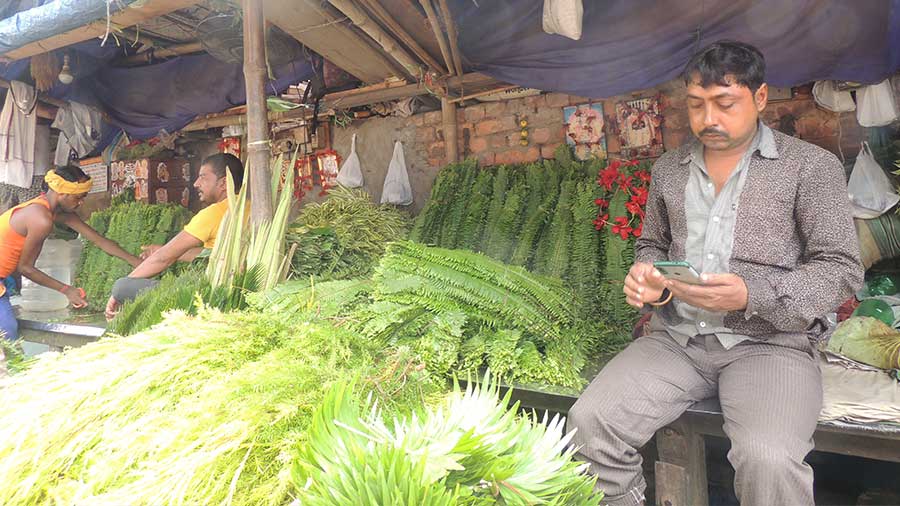
Flower seller Debu Srimani from Ranaghat has his items laid out as he awaits customers
The words of this market veteran were echoed by Debu Srimani, a flower seller at the market. Srimani has been coming regularly to Mullick Ghat from Ranaghat’s Habibpur, and he said, “Ever since the pandemic, the sales at the market are not encouraging or healthy at all, and we are just able to make ends meet. My association with the market is for well over 30 years now, and each year the competition increases manifold. This is a pattern throughout all my years of doing business and naturally, sellers like us are bound to say that things were a lot better in the past. I understand that nothing much can be done immediately by the government to alleviate our financial standing, but it would help if more infrastructure such as toilets and drinking water can be added for the comfort of all. There is also a surge on one section of the market, which has been brought about by the demolition of the over-bridge that many used and which helped distribute the crowd. It would help if that bridge was reconstructed.”
So, the next time one chances upon a flower or a flower decoration while in Kolkata, it would be worthwhile to remember that this creation is there only for the hard toil and daily struggle of countless people. The flowers do please and appease, and each have a story to tell — not only in historical terms, but also in hard human realities.
